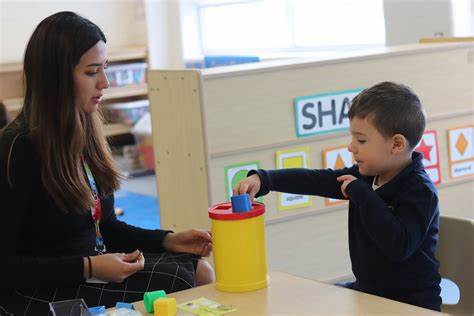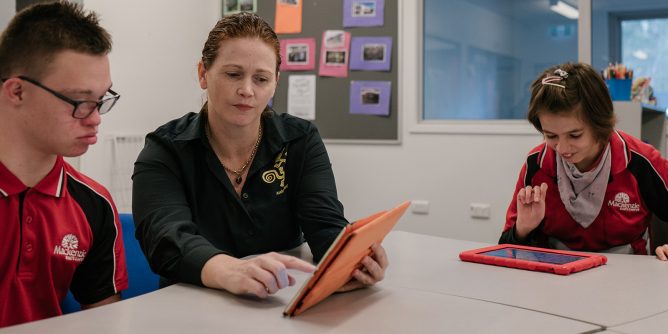Bridging the Gap: Uniting Applied Behavior Analysis and UDL for Digital In-Class Education
By Ivana Vasilevska Petrovska
In the dynamic landscape of special education, the integration of Applied Behavior Analysis (ABA) and Universal Design for Learning (UDL) has the potential to revolutionize digital in-class education for learners with autism and intellectual disabilities. This blog post aims to explore how ABA and UDL, within the framework of the social model of disabilities, can be combined to create inclusive digital learning environments. Educators and professionals in the field play a crucial role in leveraging this powerful combination to enhance the educational experiences of their students.
Understanding the Social Model of Disabilities

The social model of disabilities emphasizes that disability is not solely an individual's impairment, but a result of societal barriers and attitudes. It urges us to view disabilities as a product of an inaccessible environment rather than a personal deficit. By adopting this perspective, educators can approach digital in-class education with a focus on eliminating barriers and promoting inclusive practices.
Applied Behavior Analysis (ABA) and its Role
ABA is a scientific discipline that applies behaviorally-based interventions to improve learning outcomes and reduce challenging behaviors. Within the social model, ABA can be utilized to address specific needs and goals of learners with autism and intellectual disabilities in the digital classroom. By systematically analyzing behavior, implementing evidence-based strategies, and tracking progress, ABA supports individualized instruction and skill development.
The significance of Universal Design for Learning (UDL)

UDL provides a framework for designing instructional materials, activities, and assessments that meet the needs of diverse learners. UDL principles aim to remove barriers and offer multiple means of engagement, representation, and action and expression. In the context of digital in-class education, UDL ensures accessibility, flexibility, and inclusivity for all students, regardless of their abilities or learning styles.
Combining ABA and UDL for Digital In-Class Education: Practical Strategies
Individualized Instruction: Utilize ABA principles to identify specific learning goals and design personalized instruction for each student. Incorporate UDL strategies to provide multiple means of engagement, representation, and action and expression. This allows learners to access content, demonstrate understanding, and actively participate in the digital learning environment.
Visual Supports and Multimedia: Use visual supports, such as visual schedules, graphic organizers, and video demonstrations, to enhance comprehension and promote independence. Incorporate multimedia elements, such as videos, interactive activities, and simulations, to cater to diverse learning styles and engage students in meaningful ways.
Structured and Predictable Routines: Establish clear and consistent routines within the digital classroom to create a structured learning environment. This predictability helps students with autism and intellectual disabilities feel secure and promotes their engagement and participation.

Prompting and Reinforcement: Implement ABA techniques, such as prompting and reinforcement, to support skill acquisition and positive behavior in the digital context. Provide immediate feedback, praise, and rewards to reinforce desired behaviors and motivate learners.
Collaborative Partnerships: Foster collaboration between ABA therapists, educators, and support staff to ensure the alignment of interventions and instructional strategies across settings. Regular communication and sharing of data and progress are essential for effective support.
The integration of Applied Behavior Analysis (ABA) and Universal Design for Learning (UDL) within the social model of disabilities has the potential to revolutionize digital in-class education for learners with autism and intellectual disabilities. By combining evidence-based ABA techniques with UDL principles, educators and professionals can create inclusive digital learning environments that empower students to reach their full potential. By leveraging the strengths of both approaches, we can bridge the gap between individualized support and inclusive education, ensuring that every learner thrives in the digital classroom.
